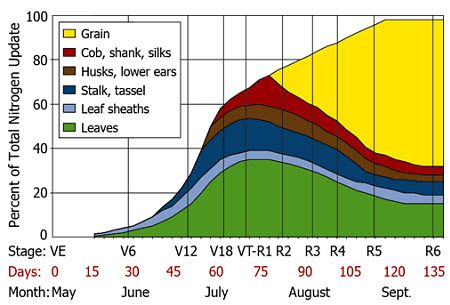Figure 2. Severe nitrogen deficiency symptoms are evident in this field that remained saturated due to excessive rainfall.
Fall-application: Fall application of N is practiced in areas where soil temperatures usually remain below 50°F from late fall to spring. These cool soil temperatures reduce the activity of nitrifying soil bacteria that convert ammonium to nitrate forms of N. However, if soil temperatures rise above 50°F, this N is at risk of loss through leaching or denitrification. Because of the extended period of time that this N is at risk of loss, fall application, if practiced, should be carefully managed. In all instances of fall application, only ammonium sources of N should be used (Murrell and Snyder, 2006). A nitrification inhibitor such as N-Serve® should also be considered to help keep N in the stable NH4+ form.
Early spring (preplant) application: Preplant N application is commonly used in areas where growers are able to complete this practice without delaying planting beyond the optimum window. Because this N is applied well ahead of major crop uptake, it too is at risk of loss if warm soil temperatures and excessive rainfall occur. Application of ammonium forms of N can reduce loss potential. Depending on the time of application relative to planting, as well as expected weather conditions (determined by climate history) a nitrification inhibitor may also be advantageous.
At planting application: Though many planters are not equipped to apply fertilizer at planting, this method of application has certain advantages. When the field is fit to plant, planter N applications are sure to occur, unlike preplant or sidedress applications that may be disrupted by weather. However, there are limits on how much N can be applied at planting, due to concerns over effects on seed germination, as well as how much material can be reasonably carried on the planter. In addition, applying fertilizer at planting slows the planting process to some degree.
Liquid forms of N, such as UAN solution, are preferred for planter application. UAN solution can be combined with liquid starter or other liquid fertilizers to supply multiple nutrients to the crop.
In-season (sidedress) application: In-season N applications allow for adjustments to planned N supply based on weather variations. If wet spring conditions result in N losses, sidedress rates can be increased. If warm temperatures and moderate rainfall result in high N mineralization and an N-sufficient crop, sidedress rates can be reduced. This process of determining crop sufficiency or need can be aided by various methods of soil testing or plant sensing (Shanahan, 2011).
In-season N applications can supply N to the crop near the time of maximum plant uptake. However, if wet conditions develop, sidedress applications may be delayed beyond the optimum application date. Extremely dry conditions can result in a delay in availability of side-dressed N to the plant.
Because of the risks associated with in-season N application, this practice must be carefully managed to reap its potential rewards. Soil fertility specialists often recommend that only one-third of total crop supply should be targeted for sidedress application. In addition, growers should be well-prepared to apply sidedress N as quickly as possible when the window of opportunity arises. Finally, a backup plan should be in place for in-season application. If weather interferes with the originally planned application, a quickly implemented backup plan can help avert significant N deficiency and yield loss.







